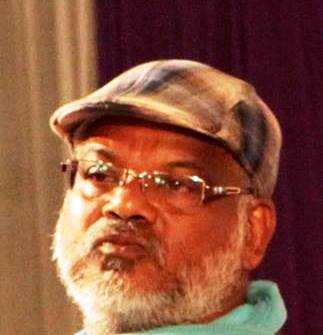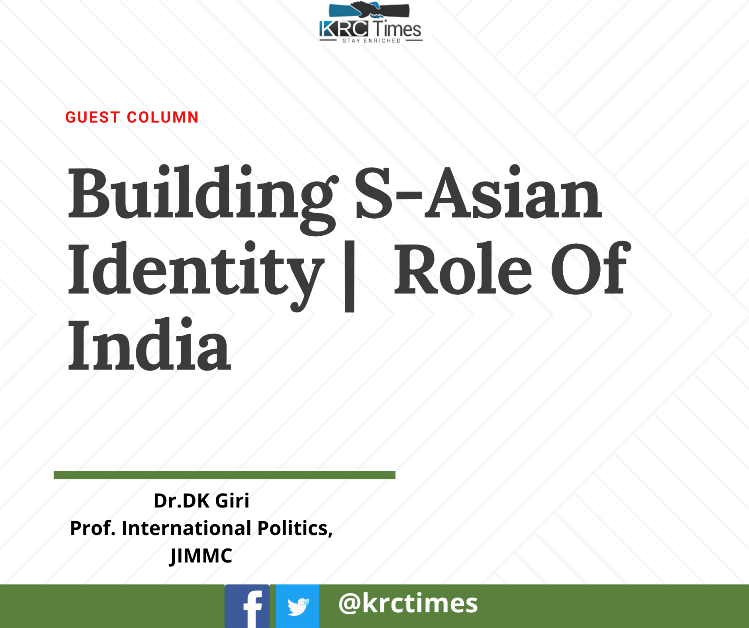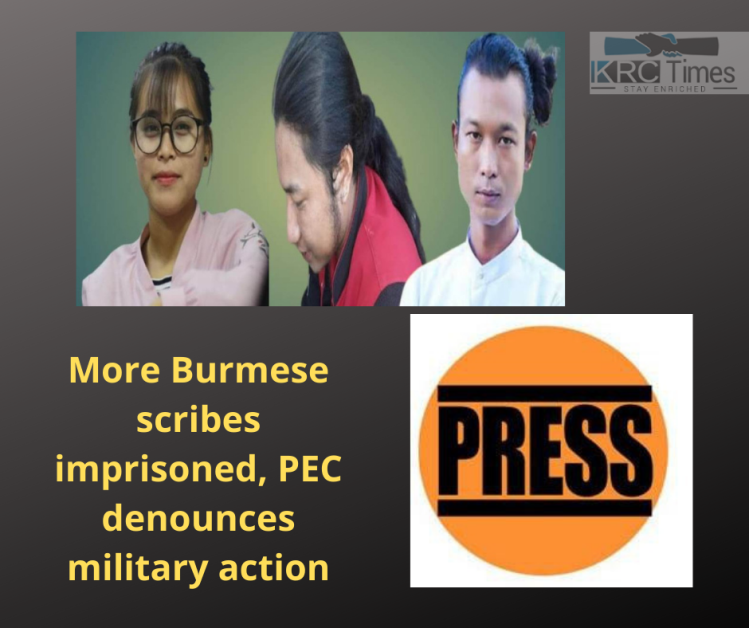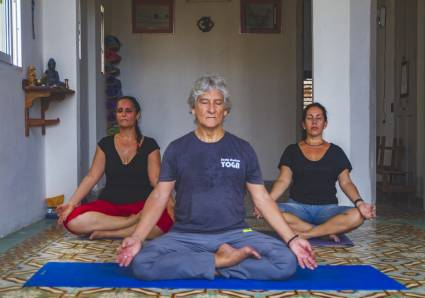The questions probed here are two, whether we need a South Asian identity or an entity; and the other is what is India’s role and inclination in building such an identity
 Dr. D.K. Giri I INFA Service
Dr. D.K. Giri I INFA Service

On my visit to Islamabad, I was pleasantly surprised with the greetings and identity, the Pakistan youths were using. They would call themselves and Indians as South Asians! In India I was told by the students of the Academy of International Politics; in New Delhi, one of the teachers asked the students to identify themselves as South Asians. Very few did. It appears that while smaller countries want a South Asian identity, India does not seem so keen. Remember, the SAARC idea was mooted by Bangladesh.
The questions probed here are two, whether we need a South Asian identity or an entity; and the other is what is India’s role and inclination in building such an identity. The answer to the second question is easy and obvious. Observers of politics in the India-Pacific region have commented that with the recapture of Kabul by the Taliban with the tacit support of Pakistan, the current ally of China, Beijing’s ‘String of Pearls’ strategy is complete.
On Afghanistan, New Delhi has been isolated and the rest of South Asian countries too have been mute spectators to the appalling developments in that country. Only Pakistan has had an active role at the behest of Americans first and now Chinese, out of its vested interests. Quite unfortunate, as Afghanistan is an independent sovereign country, was non-aligned in the past, and has been a member of SAARC since 2007. As a matter of fact, the situation in Afghanistan should goad New Delhi into building a South Asian identity strong enough to rebuff outside interventions.
Do we need a South Asian identity? Yes, certainly we do, for the following reasons. One, South Asia is quite integrated geographically, member countries share borders. So from the security point of view, if one of the South Asian countries faces security threats, internal or external, the other countries will feel the same as spill-over or snow-ball effect. Second, for trade and economic transactions, integration is imperative. The SAFTA- South Asian Free Trade Area is a good development in this regard, it will be better if it is made more functional.
Third, after the demise of Marxism, cultural factors have re-emerged in a big way to constitute identity politics. The governments, politicians, and statesmen will have to reckon with the identity formation and interaction in national and international politics. Hence, instead of allowing the identities to clash at home and abroad, it is wiser to transcend identities and create bigger ones that will subsume regional sub-identities.
Does India need a South Asian identity and how should New Delhi be more proactive in building it? To add to what was said before on India’s stake in a South Asian identity, New Delhi must have friendly neighbours before it launches-on to the world stage. No doubt, India is on the cusp of being a world power. India has had all the ingredients to become one. It was just the laggard economy holding it back. Now it is the fifth-largest, about to overtake Germany and Japan to become third. India occupies 72% of the land surface and 77% of the population of South Asia, which constitutes about 40% of the world population.
The United Nations Secretary-General Ban Ki Moon had said, “The world is looking at India to advance peace, stability, and prosperity. A secure regional economic development will also help India reach its ambitions development goals.” Former Prime Minister Atal Bihari Vajpayee while championing good neighbourhood policy had famously said, “You can change your friends, but you cannot change your neighbours”. Implied in this sagacious saying is the strategy of staying at peace and in understanding with the neighbours.
How do we build a South-Asian identity? There are political, economic, security imperatives, which should help forge South Asian solidarity. But they have not been enough to do so. India did not have the absolute and adequate economic strength to carry her South Asian neighbours at the times of their needs and to meet the demands of their development. That is why, despite India’s good intentions, her neighbours have turned to other economies mainly China, which is on the prowl to grab the countries into a debt-trap. As India’s economy grows, and it must grow fast if the leaders are perceptive and visionary enough, then the burden of South Asian development can be borne by India.
A more important strategy in the interim is to revive the cultural identity of South Asia. It is easier to do. Out of eight countries in SAARC in the ancient past, except for the Maldives, the rest were one country, one culture defined in Sanatan Dharma. We have dealt with this in the last piece in this column. In modern history, three countries were one seven decades ago. India continues to share deep cultural links, religion, language, etc. with three more — Nepal, Sri Lanka, and Bhutan. There are marital arrangements taking place between Indians and Nepalese, and Sri Lankans.
The way to go for retrieving and re-asserting the cultural identity is to re-interpret the history. Our historical texts still reflect the wounds and scars of the partitions and ethnic differences. They should be rewritten to bring out the common past and common identities. That will recreate the sense of sameness and a South Asian identity.
In order to reinforce the cultural re-definition, the persisting border conflicts will have to be resolved. The Gujral Doctrine is one model to follow. The other is a continuous dialogue between the governments. While New Delhi can think of a balance of power with China, India having security partners to match the Chinese might; it must initiate a dialogue with Pakistan. With confidence-building measures, bringing in the emotional dimension of divided families living in both countries, India and Pakistan can come together. Kashmir should be put on the table for discussion, not just the Indian part but the part in Pakistan as well. Let this be resolved through dialogue. A South Asian identity will be created by rebuilding the past and co-creating the future. —INFA
Advertisement |5E for Success

5 Advantages of KRC 5E MDP program, powered by KRC Foundation.
1. Employability training
2. Internship
3. Earn while you learn ( Work Experience Certificate, subject to selection and performance)
4. 100% Cashback on Fees through Global Garner
5. KRC Membership & Placement assistance.
Send your resume to get a free profiling session and selection.
Email resume: 5eforsuccess@gmail.com
WP: 9330830083





